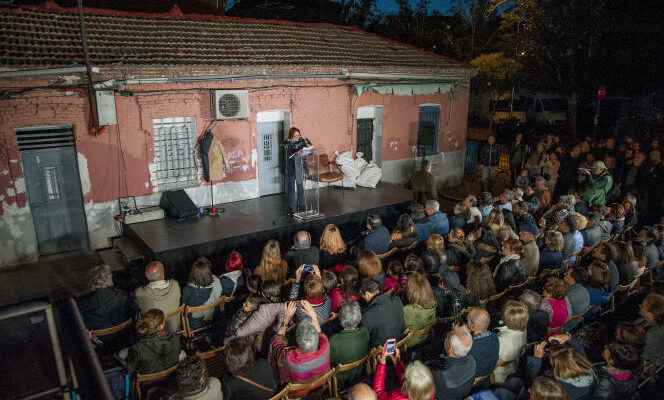LETTER FROM MADRID
It is an old brick house where the large and numerous grapeshot holes have been filled in as best they can with coarse plaster. The corrugated roof covered with irregular tiles, the iron bars on the windows, the narrow doors leading to tiny, unsanitary apartments evoke a famous image of the Spanish Civil War (1936-1939). That of two children playing, sitting on the sidewalk under the watchful eye of their mother, standing in the doorway of their modest home, just devastated by an aerial bombardment.
Immortalized by the photographer of Hungarian origin Robert Capa in November 1936, during the first months of the civil war, this workers’ house is still standing, in the number 10 rue Peironcely, in the popular district of Vallecas, in Madrid. And, since 2017, a group of historians, archivists, local personalities and left-wing elected officials have been fighting for it to be protected, and for its history and what it represents to be highlighted.
“In Madrid, there is no place of memory that recalls the bombings from which the city suffered. However, it was here that the aerial terror strategy theorized by the Italian general Giulio Douhet at the beginning of the 20th century was tested for the first time.e century, before being applied in the rest of Europe during the Second World War, emphasizes José Maria Uria Fernandez, director of the documentary center of the Anastasio de Gracia Foundation, linked to the union of the General Union of Workers (UGT). Not only could this site be used to evoke the bombardments on Madrid during the civil war, but it would also have a universal range on the effects of the air war, of which the civilian population and the children are the victims, and of which we see today even today, with its technological developments, the consequences for Ukraine. »
During the Spanish Civil War, Madrid was the testing ground for Nazi Germany’s Condor Legion and Fascist Italy’s Aviazione Legionaria, which, from November 8, 1936, carried out the systematic bombardment of the capital, in support of the troops of the nationalist forces raised against the Second Spanish Republic. Attacks that only ceased in February 1939, shortly before the city surrendered and the war ended. The house of Peironcely is one of the last known vestiges.
“Immense symbolic force”
On a vacant lot facing the building, this Friday, October 14, archaeologists unearth the remains of a slum built in the 1950s with the debris of bombed buildings, while two young anthropologists question the former neighbors, who s approach with curiosity, on their memories. “This place, where the buildings bombed during the war and the slums of Francoism mingle, has an immense symbolic force”summarizes the archaeologist Alferdo Gonzalez-Ruibal. “A lot of people didn’t dare to speak until now, out of shame. They are among the vanquished. This neighborhood has always been red,” adds the communist parish priest of San Carlos de Borromeo, Javier Baeza.
You have 59.83% of this article left to read. The following is for subscribers only.
